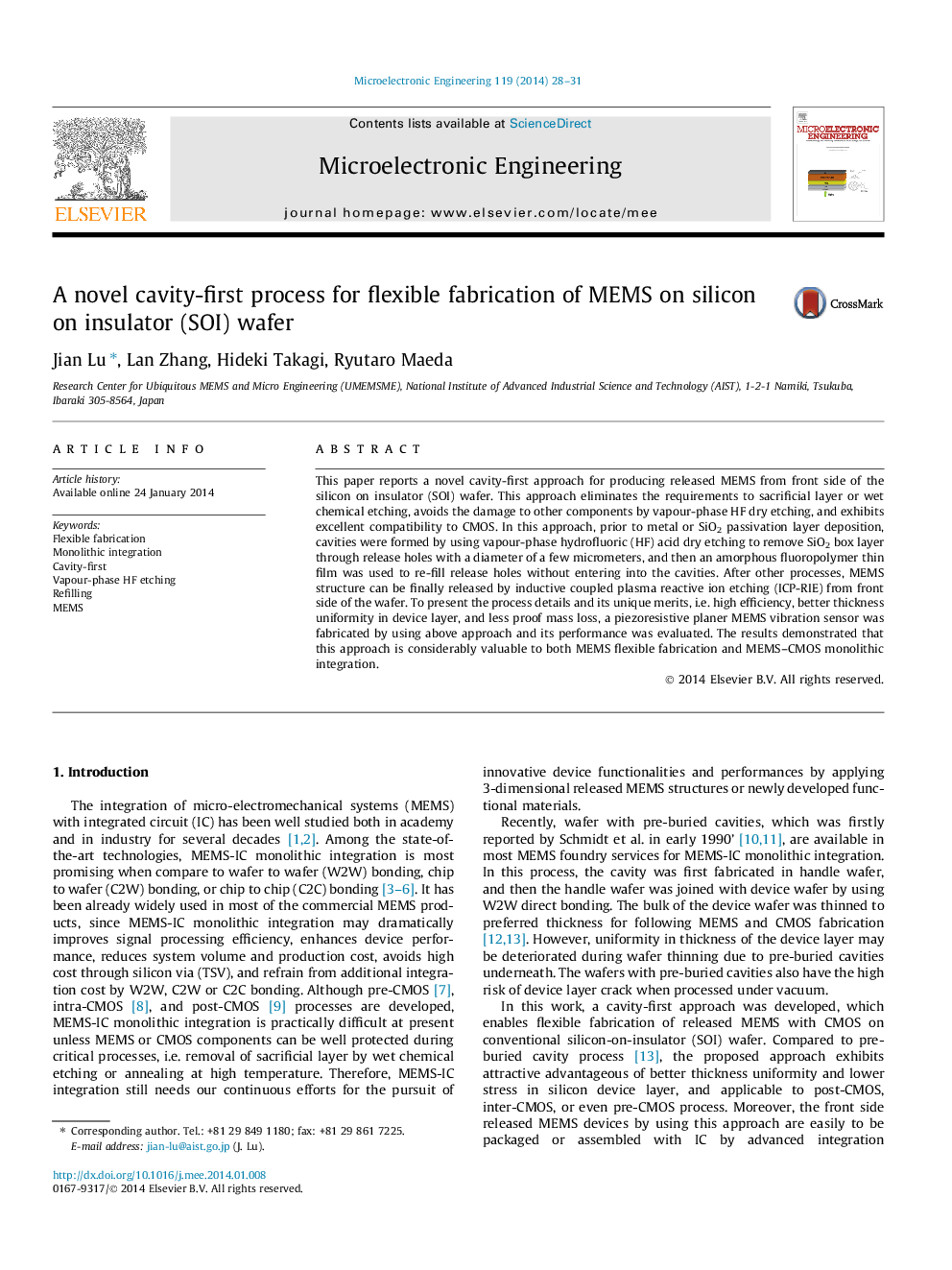| Article ID | Journal | Published Year | Pages | File Type |
|---|---|---|---|---|
| 542593 | Microelectronic Engineering | 2014 | 4 Pages |
•A novel approach for producing released MEMS from front side of SOI wafer.•A cavity underneath device layer was fabricated and then sealed by a fluoropolymer.•Only dry processes were used for cavity formation, cavity sealing, MEMS release.•MEMS structure with better thickness uniformity and less mass loss can be achieved.•Highly valuable for flexible fabrication of MEMS & MEMS–CMOS monolithic integration.
This paper reports a novel cavity-first approach for producing released MEMS from front side of the silicon on insulator (SOI) wafer. This approach eliminates the requirements to sacrificial layer or wet chemical etching, avoids the damage to other components by vapour-phase HF dry etching, and exhibits excellent compatibility to CMOS. In this approach, prior to metal or SiO2 passivation layer deposition, cavities were formed by using vapour-phase hydrofluoric (HF) acid dry etching to remove SiO2 box layer through release holes with a diameter of a few micrometers, and then an amorphous fluoropolymer thin film was used to re-fill release holes without entering into the cavities. After other processes, MEMS structure can be finally released by inductive coupled plasma reactive ion etching (ICP-RIE) from front side of the wafer. To present the process details and its unique merits, i.e. high efficiency, better thickness uniformity in device layer, and less proof mass loss, a piezoresistive planer MEMS vibration sensor was fabricated by using above approach and its performance was evaluated. The results demonstrated that this approach is considerably valuable to both MEMS flexible fabrication and MEMS–CMOS monolithic integration.
Graphical abstractFigure optionsDownload full-size imageDownload as PowerPoint slide
